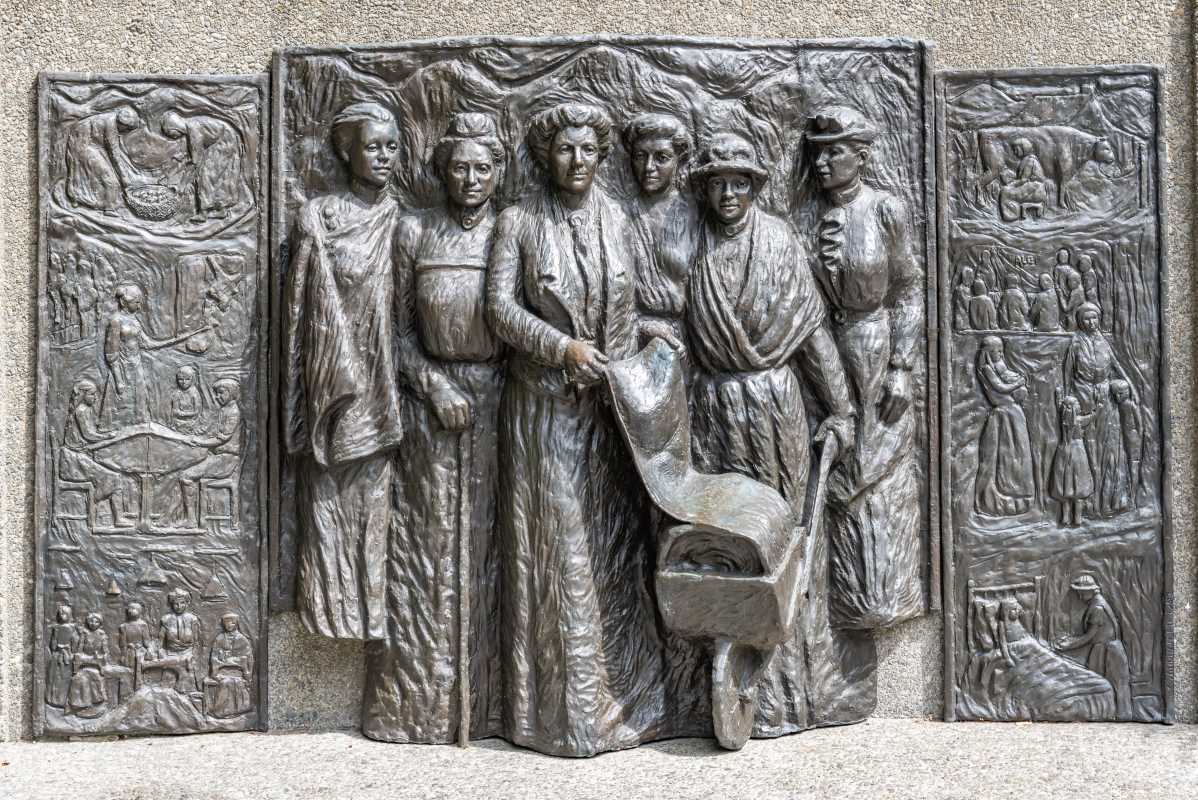The westward expansion of the United States is a significant chapter in American history. It evokes images of pioneers traveling in covered wagons, vast open prairies, and the idea of Manifest Destiny. But behind those romanticized notions of growth and prosperity lies a more complicated story. Westward expansion wasn’t just about gaining land; it came with heavy costs, especially for Native American communities. The consequences of this period still ripple through these communities today. To understand the full picture, we need to look at what westward expansion was, why it happened, and how it left a lasting mark on Native peoples.
What Was Westward Expansion?
Westward expansion refers to the period in the 19th century when settlers moved westward across the United States in large numbers. Starting in the late 1700s and continuing through the 1800s, the U.S. government encouraged this movement by acquiring new territories and promoting settlement in these lands. The Louisiana Purchase of 1803, for example, nearly doubled the country’s size and sparked interest in exploring and settling further west. Later, events like the discovery of gold in California and the promise of fertile farming land pushed even more people to move west.
The idea behind this migration was often tied to Manifest Destiny, a belief that Americans were destined, even divinely chosen, to spread their way of life and ideals across the continent. To many settlers and policymakers, this justified their claim to land that had been occupied by Native communities for thousands of years.
The Impact on Native American Land
For Native communities, westward expansion was devastating. Long before pioneers arrived, Native Americans lived, farmed, hunted, and built thriving cultures across the land. Many tribes treated the land with deep reverence, considering it sacred and essential to their way of life. But as settlers moved west, this connection to the land was ignored and eventually erased.
The U.S. government facilitated westward expansion through policies that prioritized settlers over Native Americans. Here are some key events and policies that led to significant land loss for Native communities:
- Indian Removal Act (1830): This law allowed the government to relocate Native tribes from their ancestral lands to designated areas in the west. This eventually led to the infamous Trail of Tears, where thousands of Native Americans were forced to leave their homes and march hundreds of miles, often under harsh and deadly conditions.
- The Reservation System: Native people who weren’t outright removed were often confined to reservations, small plots of land set aside for tribes. These reservations were typically located in areas that settlers found undesirable or barren, making it hard for Native people to sustain their traditional way of life.
- Land Seizures and Treaties: While treaties were frequently made between the government and Native tribes, many of them were either broken or manipulated to favor settlers. Native Americans were often pressured or deceived into giving up large tracts of land.
By the end of the 19th century, Native Americans had lost the majority of their land. Beyond losing physical territory, they also lost access to vital resources, sacred sites, and traditional hunting and farming lands, all of which were critical for their survival.
Cultural Losses and Assimilation
The loss of land wasn’t the only blow to Native communities. Westward expansion also disrupted centuries-old traditions, languages, and cultural practices. Settlers brought with them their own ways of life, often insisting that Native peoples abandon their customs and assimilate. This assimilation wasn’t voluntary for most; it was forced and reinforced by government policies.
One of the most painful examples of forced assimilation was the boarding school system. Native children were often taken away from their families and sent to government-run or church-run schools where they were forbidden to speak their native languages or practice their traditions. The goal was to “Americanize” them, stripping away their identity in the process.
Over time, many tribes witnessed an alarming erosion of their cultural heritage. Elders, who were the keepers of oral traditions, were often removed from communities or rendered powerless. Languages started disappearing as younger generations were discouraged or outright banned from speaking them.
Lasting Economic Challenges
The economic impacts of westward expansion also continue to affect Native communities today. Many reservations were established in remote, resource-poor areas, making it difficult for tribes to develop self-sustaining economies. Traditional ways of living, like hunting, gathering, and farming, were often no longer viable due to the loss of land and natural resources. Over time, many Native communities grew dependent on government assistance to survive.
Even today, Native Americans often face some of the highest poverty rates in the country. Unemployment, lack of access to quality education, and inadequate healthcare are ongoing challenges for many tribes. Decades of systemic oppression and broken promises have left lasting scars that are hard to heal.
Environmental Damage and Loss of Resources
Nature wasn’t spared during westward expansion either. Settlers cleared forests, overhunted animals, and dug up the land for farming and mining. For Native tribes who relied on a balanced relationship with nature, these disruptions were catastrophic.
For example, the near extinction of the American bison drastically altered life for many Plains tribes. Bison were not just a source of food; they were central to the spiritual and cultural identity of these tribes. Settlers hunted bison in such enormous numbers that millions were wiped out, leaving Native peoples without one of their main sources of livelihood.
Beyond hunting, westward expansion also caused pollution and long-term environmental damage. Rivers were diverted, forests were cut down, and mining added toxic waste to the land. Many Native communities are still dealing with the consequences of these environmental changes today, including water contamination and loss of arable land.
The Ongoing Struggle for Justice
Despite the hardships caused by westward expansion, Native American communities have shown incredible resilience. Today, many tribes are working to reclaim their rights, rebuild their cultures, and protect their resources.
Efforts to preserve Native languages are underway, with tribes creating programs to teach their youth traditional dialects. Cultural events like powwows and ceremonies are held to keep traditions alive. Meanwhile, legal battles over water rights, land claims, and environmental protections continue as tribes fight to reclaim what was unjustly taken from them.
There’s also growing recognition of the importance of Native perspectives in the environmental movement. Indigenous communities have long advocated for sustainable practices and respect for the land, and their voices are increasingly being sought in conversations about conservation and climate change.
The Legacy of Westward Expansion
The story of westward expansion is one of opportunity for some and devastation for others. While it helped shape the United States into the country it is today, it also caused deep and lasting harm to Native American communities. Their land was taken, their cultures were attacked, and their futures were forever altered.
It’s essential to understand this history because its effects are still being felt today. By learning about the mistakes of the past, we can work together to build a fairer, more inclusive future. Native communities are not relics of history; they are vibrant, living cultures with valuable contributions to offer. Supporting their efforts to heal, rebuild, and thrive is a step toward justice and reconciliation.
 (Image via
(Image via





